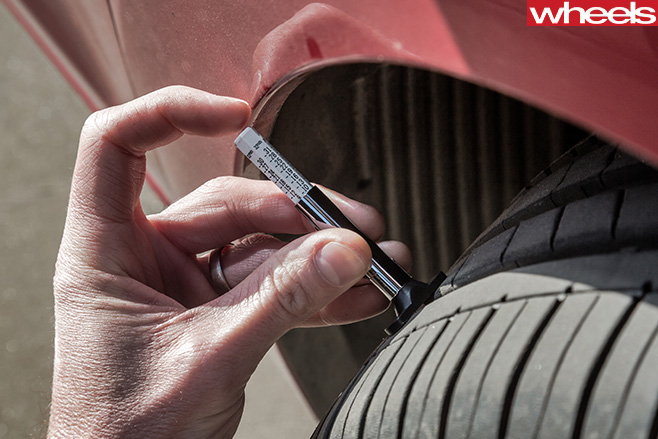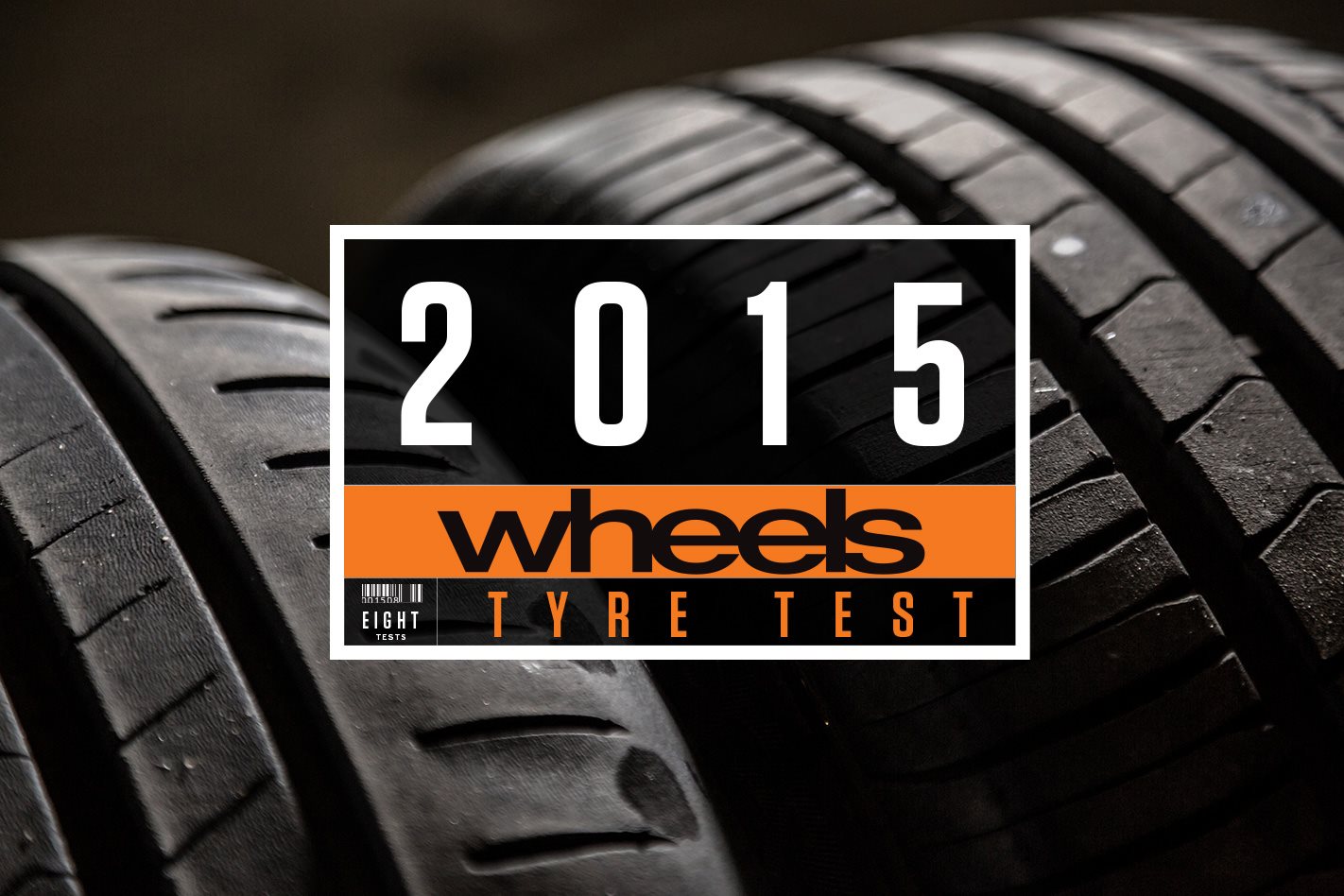Looking for rubber with a great blend of grip, progression and longevity? We put popular tyres from Continental, Dunlop, Goodyear, Michelin and five other brands to the test.
TREAD ALERT
POPULAR perception suggests that the average consumer considers tyres a ‘grudge purchase’, often enquiring “Which is the cheapest?” at the sales counter.
Hearteningly, however, Wheels’ tyre industry sources say that enthusiast buyers are more likely to have an idea of what they want, and are generally prepared to pay more for a tyre that offers a superior level of safety and performance.
That’s great, but the challenge is identifying the best tyre. How do you do it, beyond choosing one from a brand name, with a higher price tag?
That’s where the Wheels Tyre Test comes in, with a series of tests designed to sort the grippy from the slippy.
Our testing program was held on the skid pan and skid circuit of Sydney Motorsport Park over two days – dry testing on day one and wet testing on day two.
Race driver and engineer Renato Loberto drove the Hyundai i30 for each ‘blind’ test – he didn’t know which brand was fitted to the car.
Each set of tyres was put through the same regime. A public road loop kicked off each test, serving two purposes: to scrub in the surface of the tyre and provide the opportunity to take a tyre noise reading on a section of coarse-chip road. Back on the skid pan, Renato hit the slalom, cornering test and brake test (in that order) before taking to the skid-circuit for a series of hot laps.
On the second test day, we repeated the slalom, cornering and braking tests with the skid pan’s irrigation system set to wet, for a total of eight test disciplines.
Each discipline was scored out of 10 with the exception of the noise test. So, 20 points for the slalom tests (dry and wet), 20 points for the cornering tests and 20 points for the braking tests, plus 10 points for the skid circuit hot-lap and five points for the noise test.
The winner at each discipline took the full tally of points, while the rest of the tyres were prorated based on their proximity to the winner. Totals were out of 75 points, but we’ve presented them as percentages for clarity.
Tyre temperature was noted before each run and a control tyre run was completed at the beginning, middle and end of the day to ensure that potential variables such as vehicle performance, water coverage (on day two) and track temperature weren’t evolving as tests went on.
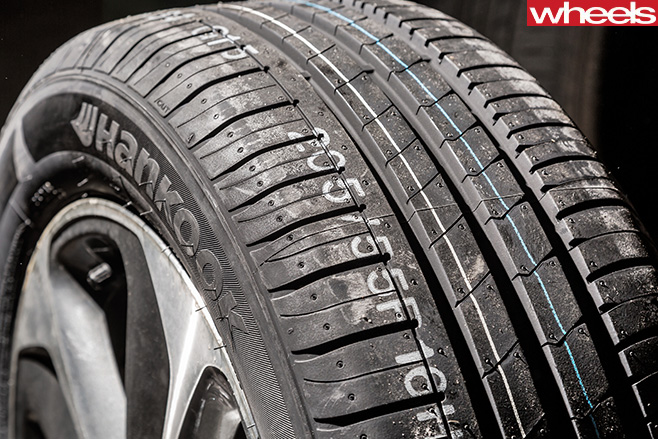
Although we’ve chosen a particular 16-inch tyre – because it’s a popular seller – the tyre models represented are available in a range of other sizes, and our results are applicable to each of them, too.
The field
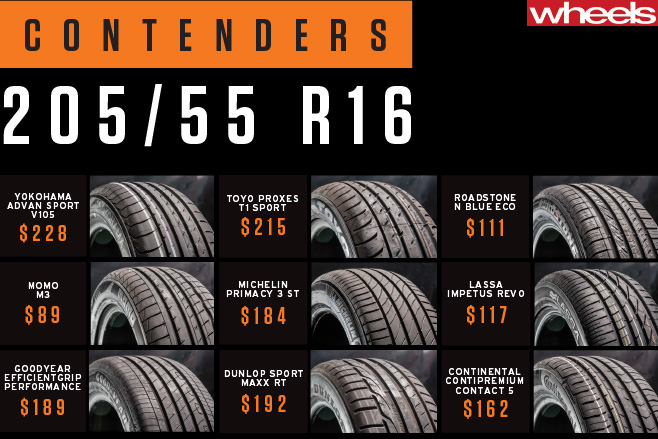
We tested the Continental ContiPremium Contact 5, Dunlop Sport Maxx RT, Goodyear EfficientGrip Performance, Lassa Impetus Revo, Michelin Primacy 3 ST, Momo M3, Roadstone N Blue Eco, Toyo Proxes T1 Sport, and Yokohama Advan Sport V105.
The car
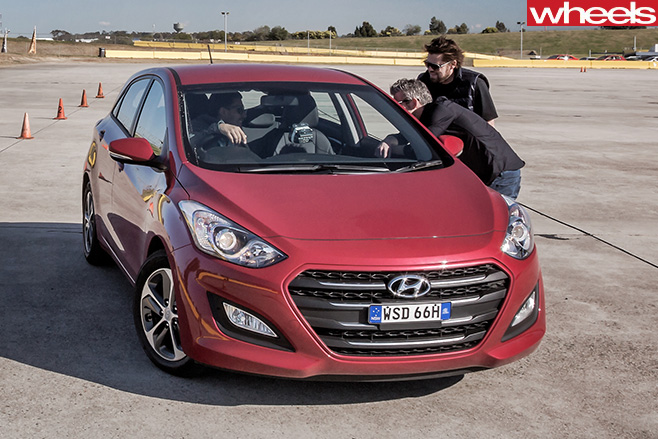
The driver
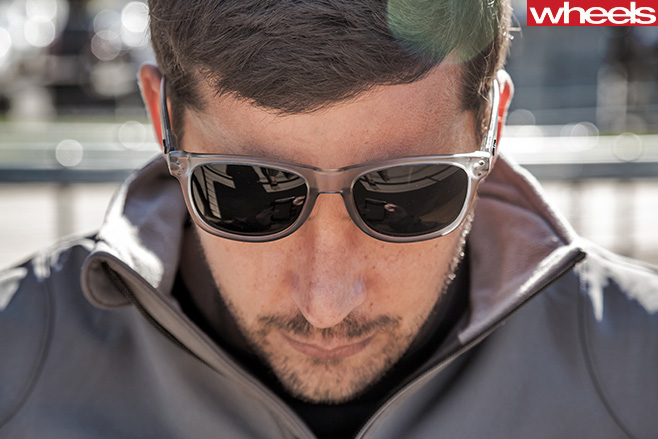
The pit crew
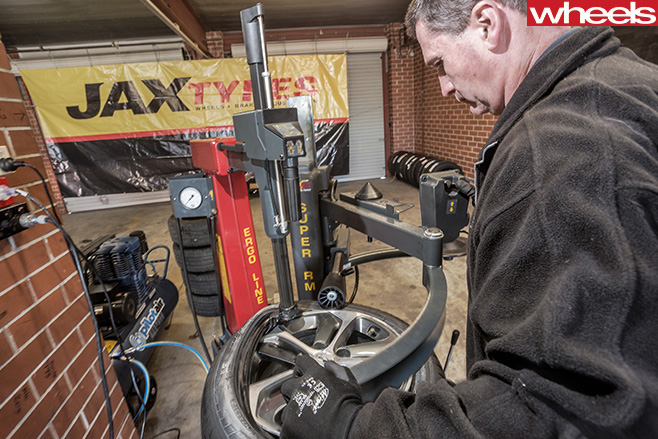
The Wheels Tyre Test involved stripping and fitting some 25 sets – 100-odd tyres in total – and it was all in a day (or two’s) work for the team. Thanks, fellas, we couldn’t have done it without you.
The ringmaster
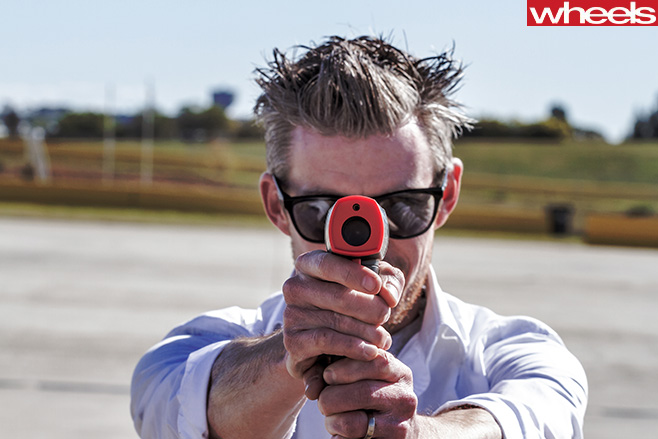
SLALOM DRY
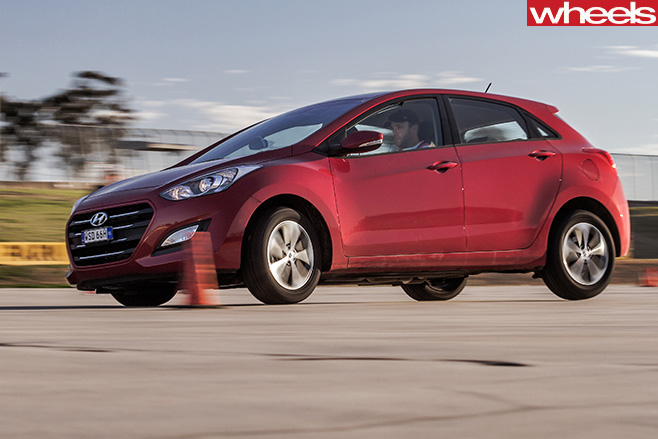

CIRCLE DRY
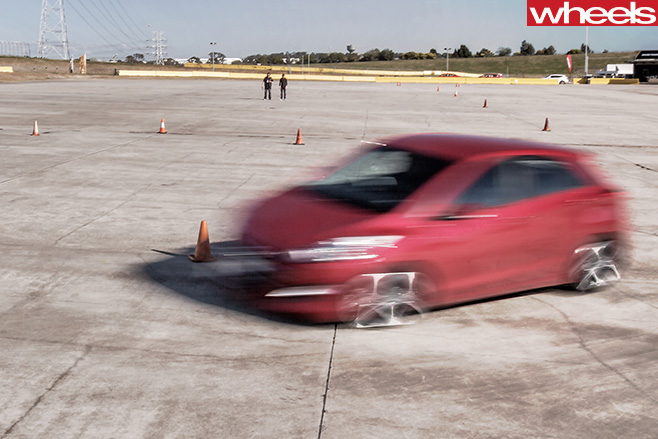
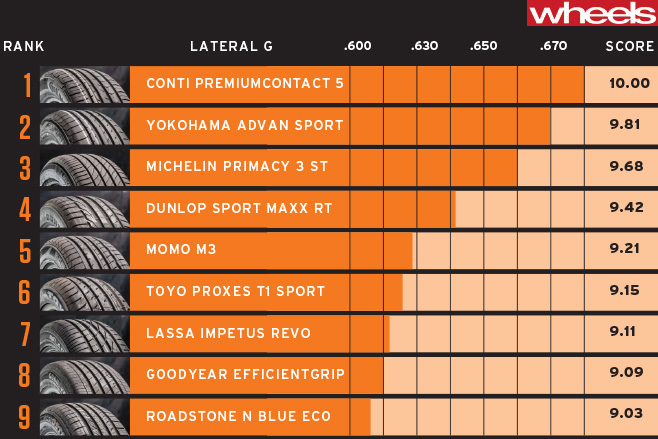
BRAKING DRY
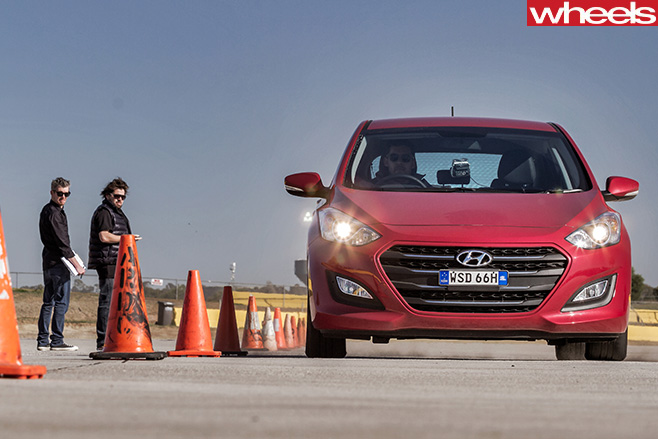
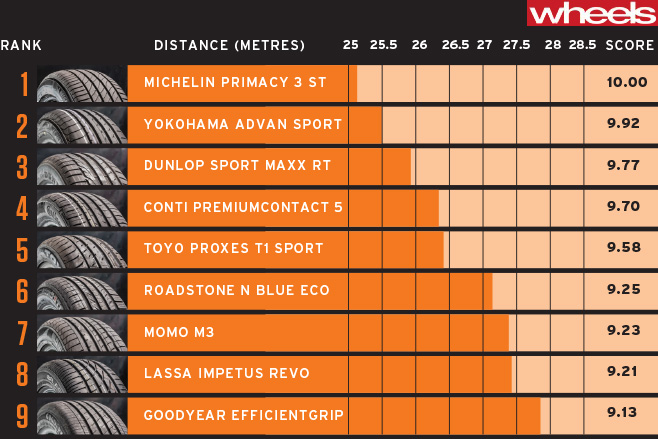
CIRCUIT DRY
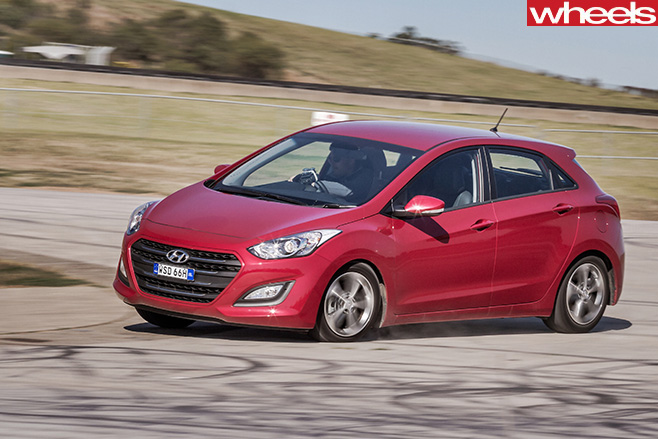
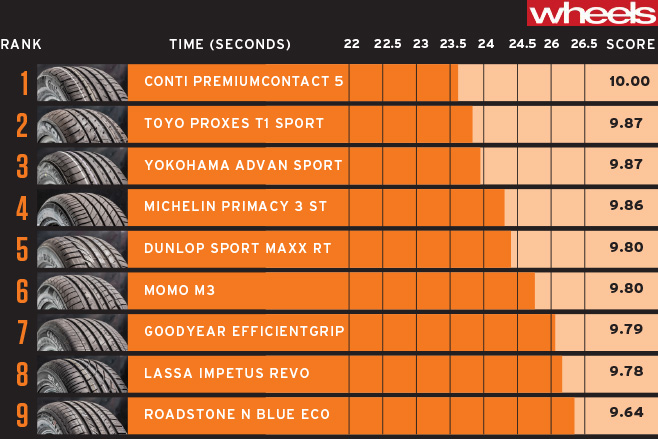
SLALOM WET
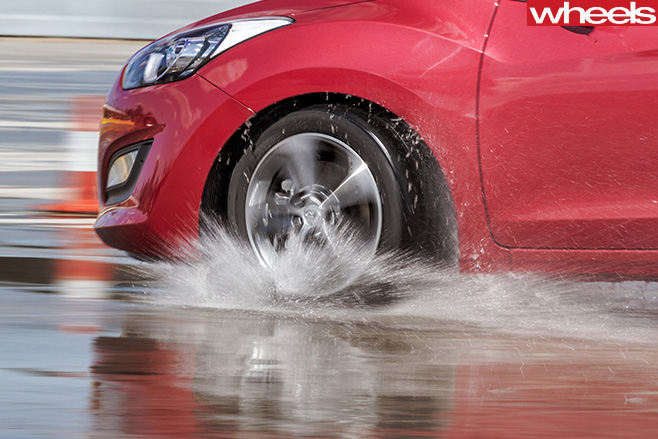
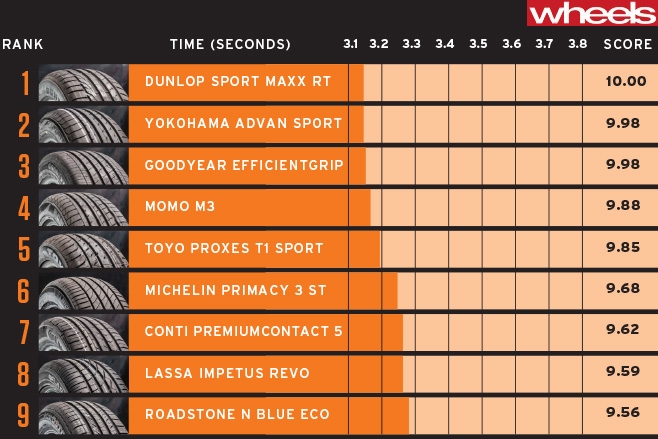
CIRCLE WET
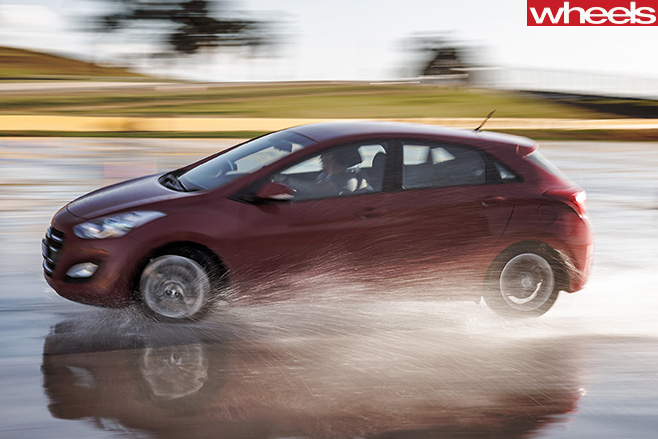
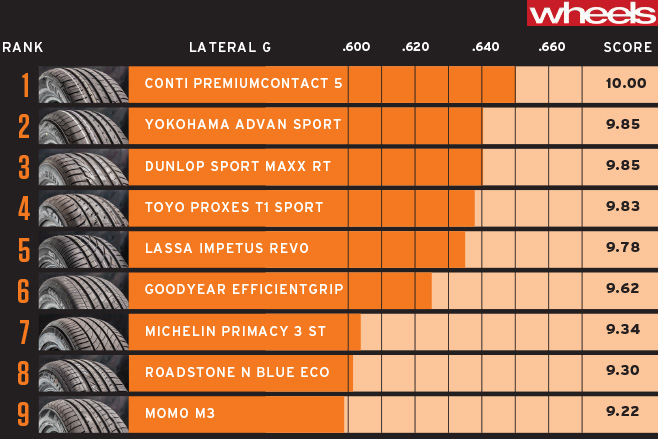
LOGICALLY enough, the Continental ContiPremiumContact5 mustered less outright grip in the wet than the dry – about five percent less in round figures. However, it still hung on tenaciously for the quickest average lap around the circle and a 0.649g figure that topped all other tyres in this discipline. This makes the Continental the outright slalom-test gold medallist, having topped the timesheet during the dry iteration, too. Like the Continental, the Yokohama, which took second place, is a great tyre in terms of its transient grip on both wet and dry surfaces. In the wet the Dunlop is just as good, though. Its time, lateral g (and, therefore, score) were identical to the Yokohama’s, down to 14 decimal places.
BRAKING WET
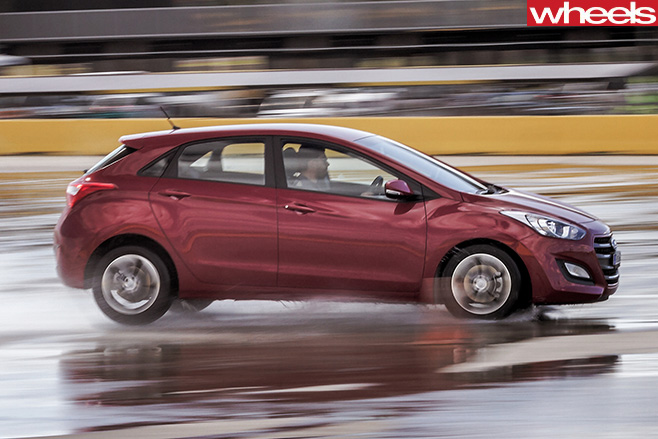
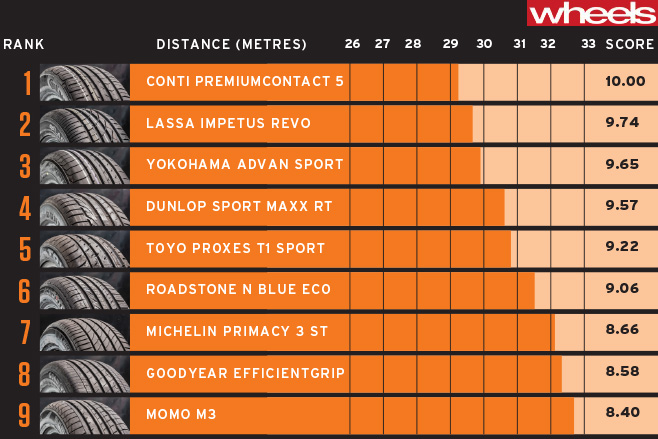
TYRE NOISE
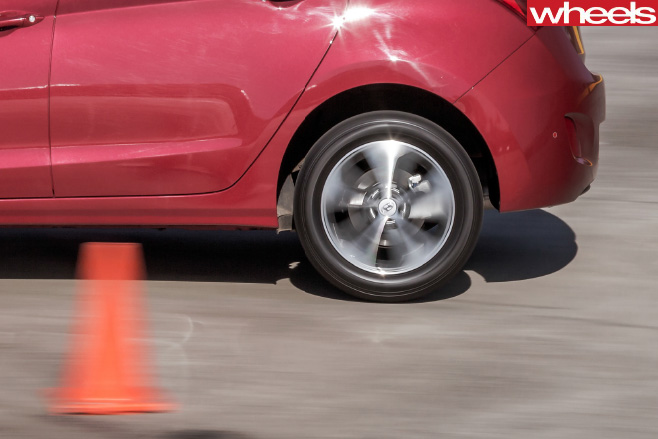
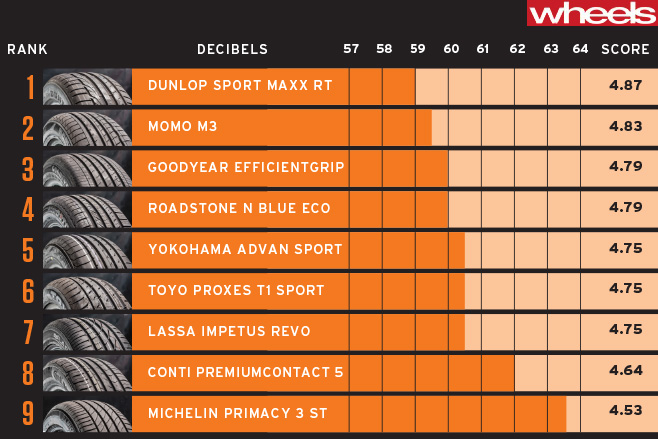
OVERALL WINNER: YOKOHAMA ADVAN SPORT V105

The Yokohama Advan Sport V105 didn’t win any discipline outright, but it was right at the pointy end at almost every one of them, securing four silvers, just for starters. Then there were the two thirds and a fourth; its worst result was sixth – equal sixth, as it turns out – in the noise test, which counts for little if you’re focused on safety and handling. The Yokohama was the class of the field, and put in its best showings in the dry cornering and braking, and the slalom in both wet and dry conditions.
Interestingly, if you consider only the results of the dry tests, the Yokohama would still win, though if you took only the wet test results it would be pipped by the Continental, which took the silver overall. Conversely, the Continental falls to third if you consider only dry test results. Like the Continental and the Yokohama, the Dunlop (third overall) offers a great mix of dry and wet weather performance. It drops to fourth if you look at only the dry test results. One last look at the dry-only and wet-only results reveals that the Michelin lost out because of its leaning towards dry performance. Second across the dry tests, it slipped to eighth in the wet; it finished fifth overall.
Shockers? Well, even the last-placed Momo M3 performed far better than the set of worn, yet legal tyres tested, which were diabolical in the wet. The message: Make sure your tyres have plenty of tread and, if you can, buy a good brand such as those standing tall on the Wheels Tyre Test 2015 podium.
Underinflated underperformer
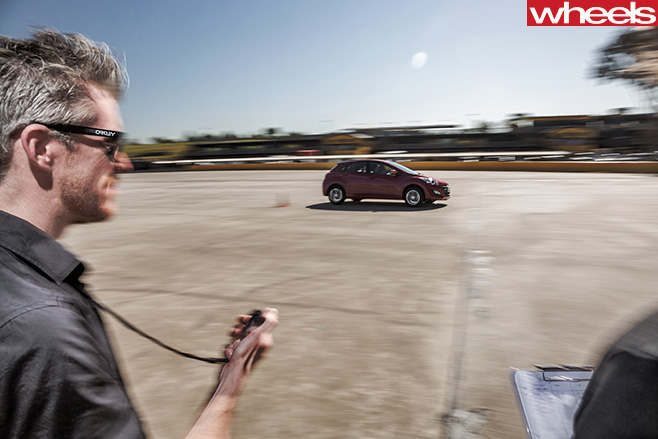
Does bigger mean better?
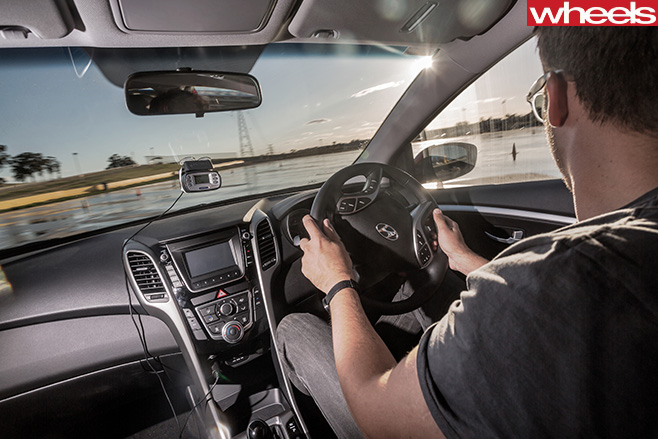
Pump up the jam?
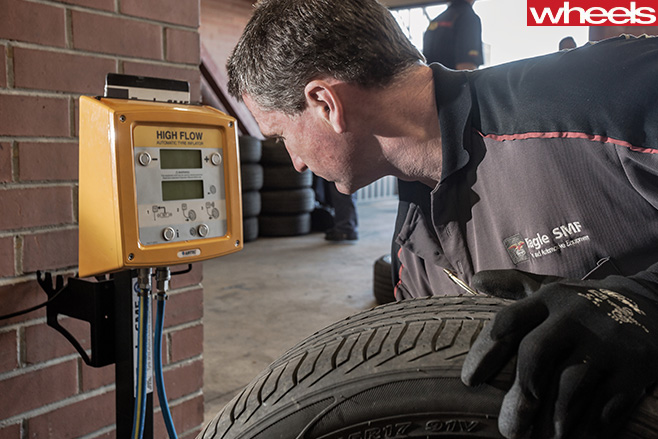
Wear – do you geddit?
